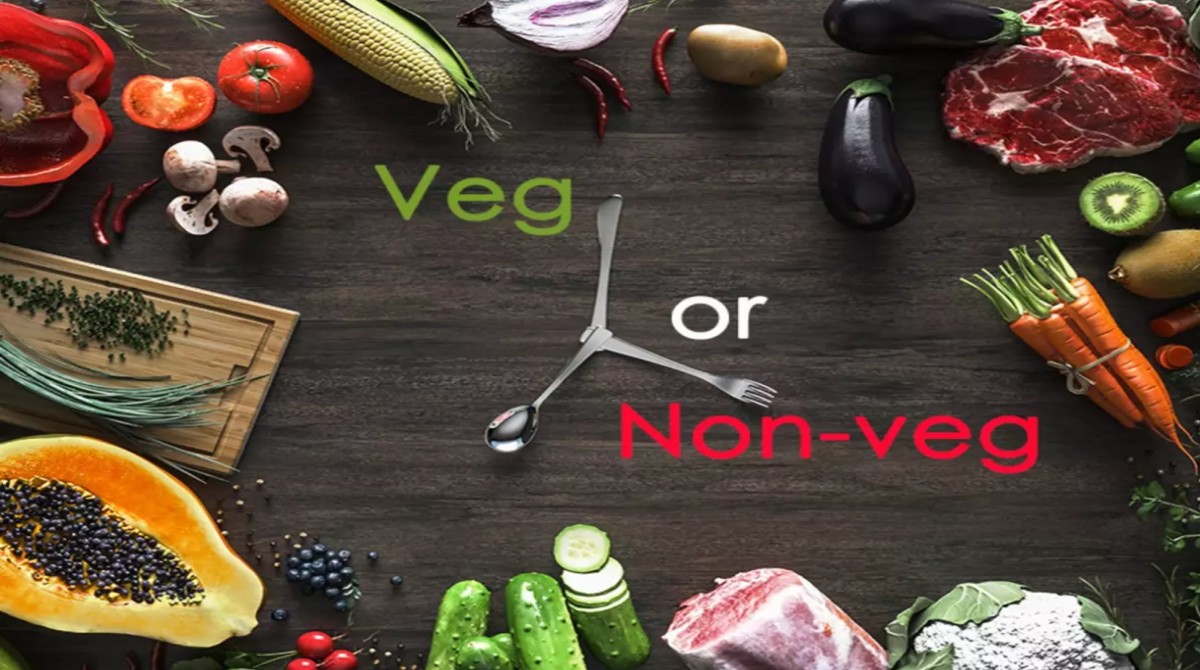How To Distinguish Between Vegetarian And Non-Vegetarian Food Products
July 15, 2022

Why are Vegetarian and Non-Vegetarian products labelled separately?
India being a majorly vegetarian country, the diets here are rich in carbohydrates (almost 70-80 percent of their diet). Indian food companies mostly produce both vegetarian and non-vegetarian products to cater to a larger audience. But the problem arises when they are produced in the same firm which poses certain challenges in terms of managing vegetarian (green/veg) and non-vegetarian (brown/non-veg) production. This will hamper the sentiments and religious beliefs of people if the categorization hasn’t been done in a proper manner. Hence, it becomes necessary to distinguish both the products accurately and clearly. Therefore in 2011, the Indian state made it mandatory for all processed food products to be labelled to indicate whether products are vegetarian (green) or non-vegetarian (brown).
How are they distinguished or declared on a label?
Non-Vegetarian
All packaged foods that contain ingredients including food additives, and processing aids of animal origin have to depict a symbol and color code, to indicate that the product is a Non-Vegetarian Product.
In the recently released 2020 Labelling and Display Regulations, FSSAI has changed the symbol of non vegetarian food from a brown circle to a brown triangle to help colour blind people distinguish it from the green circle denoting vegetarian food.
The symbol shall consist of a brown color-filled triangle inside a square with a brown outline having the diameter and sides not less than the minimum size specified.
Provided that any article of food contains egg only as Non-Vegetarian ingredient, the manufacturer, or packer or seller may give a declaration to this effect in addition to the said symbol.

Vegetarian
All packaged food that contains ingredients including food additives, and processing aids of plant origin has to depict a symbol and color code, to indicate that the product is a Vegetarian Product. The symbol shall consist of a green color-filled circle inside a square with a green outline having sides not less than the minimum size specified.

Size of Vegetarian and Non-vegetarian Logo

All advertisements, pamphlets, brochures, etc are mandatorily required to promptly display the vegetarian and non-vegetarian logo for their products.
These logos are to be displayed on the front of pack having a contrasting background in close proximity to the Brand name.
The declaration of vegetarian and non-vegetarian logos are not applicable for certain products such as mineral water, packaged drinking water, carbonated water, alcoholic beverages, liquid milk, milk powders and honey.
How are vegan products marked?
Veganism does not include foods which are of animal origin or its by-products being used in the product in any form. It includes all plant-based ingredients like fruits, vegetables, cereals and nuts. This group of consumers avoid meat, poultry, seafood, dairy products, eggs as well as honey.
There is no separate regulation for exclusively vegan products as of now but according to new FSSAI Amendment Regulations, 2020 w.r.t. new standards of Dairy Analogue and revision of standards of Ghee and other Milk Fat Products, non-dairy substitutes will be addressed as “Analogue” which is defined as following by FSSAI:
“Analogue in the dairy context means an imitation product that is designed or structured to mimic, or offered as an alternative/replacement to, a milk or milk product or composite milk product as defined in these regulations by partial or full substitution of selected milk components with other components from non-dairy sources, or prepared by using non-dairy ingredient(s) exclusively or in combination with dairy ingredients.”
Further, it has been provided that terms such as ‘dairy’, phonetically similar or spell alike terms (related to milk or milk products) shall not be used on the nomenclature of such products.
The name of the dairy ingredient shall be indicated in the list of ingredients, provided it has been used during the manufacturing of the product.
It is also mandatory to label such Analogue products as ‘THIS IS NOT A DAIRY PRODUCT.’
Also Read - Why Is It So Critical To Read A Food Label? REFERENCES:
Khandewal S & Kavishwar A (October, 2018). Indians Are Protein Deficient, And It Needs Immediate Attention. Forbes India.
Food Safety Helpline. (October, 2013). Food Labelling Requirements for Veg and Non-Veg: Module 5.
Fischer, J. (2020). Green and/or brown: Governing food production in India. Research in Globalization, 2, 100017.
Food Safety and Standards Authority of India. Product Standards. Food Safety and Standards (Labelling and Display) Regulations, 2020.
Rai D (September, 2020). Vegan products or imitation products. iPleaders.

Rashida Vapiwala (Founder at LabelBlind®, Food Label Specialist, Ph.D (Food Science and Nutrition))
Rashida is passionate about solving problems for the food industry using technology. She loves creating tech-led solutions in the space of Nutrition.
